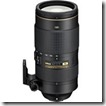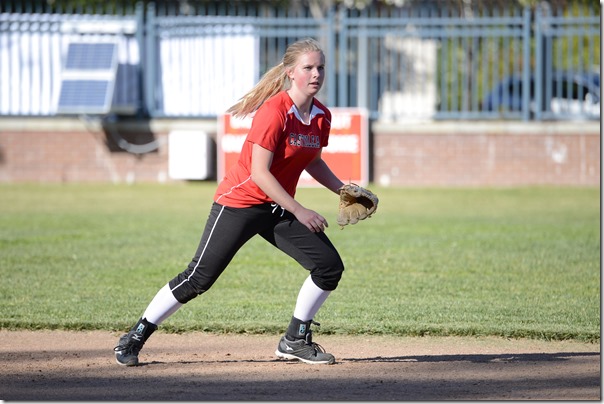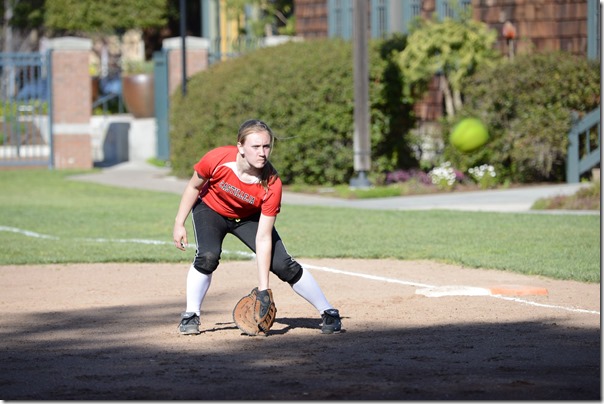- Photo Safaris
- Alaska Bears & Puffins World's best Alaskan Coastal Brown Bear photo experience. Small group size, idyllic location, deluxe lodging, and Puffins!
- Participant Guestbook & Testimonials Candid Feedback from our participants over the years from our photo safaris, tours and workshops. We don't think there is any better way to evaluate a possible trip or workshop than to find out what others thought.
- Custom Photo Tours, Safaris and Personal Instruction Over the years we've found that many of our clients & friends want to participate in one of our trips but the dates we've scheduled just don't work for them or they'd like a customized trip for their family or friends.
- Myanmar (Burma) Photo Tour Myanmar (Burma) Photo Tour December 2017 -- with Angkor Wat option
- Reviews Go hands-on
- Camera Reviews Hands-on with our favorite cameras
- Lens reviews Lenses tested
- Photo Accessories Reviews Reviews of useful Photo and Camera Accessories of interest to our readers
- Useful Tools & Gadgets Handy tools and gadgets we've found useful or essential in our work and want to share with you.
- What's In My Camera Bag The gear David Cardinal shoots with in the field and recommends, including bags and tools, and why
- Articles About photography
- Getting Started Some photography basics
- Travel photography lesson 1: Learning your camera Top skills you should learn before heading off on a trip
- Choosing a Colorspace Picking the right colorspace is essential for a proper workflow. We walk you through your options.
- Understanding Dynamic Range Understanding Dynamic Range
- Landscape Photography Tips from Yosemite Landscape Photography, It's All About Contrast
- Introduction to Shooting Raw Introduction to Raw Files and Raw Conversion by Dave Ryan
- Using Curves by Mike Russell Using Curves
- Copyright Registration Made Easy Copyright Registration Made Easy
- Guide to Image Resizing A Photographers' Guide to Image Resizing
- CCD Cleaning by Moose Peterson CCD Cleaning by Moose Peterson
- Profiling Your Printer Profiling Your Printer
- White Balance by Moose Peterson White Balance -- Are You RGB Savvy by Moose Peterson
- Photo Tips and Techniques Quick tips and pro tricks and techniques to rapidly improve your photography
- News Photo industry and related news and reviews from around the Internet, including from dpreview and CNET
- Getting Started Some photography basics
- Resources On the web
- My Camera Bag--What I Shoot With and Why The photo gear, travel equipment, clothing, bags and accessories that I shoot with and use and why.
- Datacolor Experts Blog Color gurus, including our own David Cardinal
- Amazon Affiliate Purchases made through this link help support our site and cost you absolutely nothing. Give it a try!
- Forums User to user
- Think Tank Photo Bags Intelligently designed photo bags that I love & rely on!
- Rent Lenses & Cameras Borrowlenses does a great job of providing timely services at a great price.
- Travel Insurance With the high cost of trips and possibility of medical issues abroad trip insurance is a must for peace of mind for overseas trips in particular.
- Moose Peterson's Site There isn't much that Moose doesn't know about nature and wildlife photography. You can't learn from anyone better.
- Journeys Unforgettable Africa Journeys Unforgettable -- Awesome African safari organizers. Let them know we sent you!
- Agoda International discounted hotel booking through Agoda
- Cardinal Photo Products on Zazzle A fun selection of great gift products made from a few of our favorite images.
- David Tobie's Gallery Innovative & creative art from the guy who knows more about color than nearly anyone else
- Galleries Our favorite images
New Nikon 80-400mm AF-S Lens: Ultimate optics for safari-goers and soccer moms
New Nikon 80-400mm AF-S Lens: Ultimate optics for safari-goers and soccer moms
Submitted by David Cardinal on Fri, 03/22/2013 - 09:24
 No lens has been more eagerly awaited, or for longer, than the replacement for the aged Nikon 80-400mm zoom telephoto. After well over a decade Nikon has finally rolled out its successor – the Nikon 80-400mm AF-S VR lens, with massively improved VR and focusing speed, as well as completely redesigned optics. While it is a technical marvel, its high price and large size may mean it isn’t for you. We’ve got a review unit here in the office, and will be posting more over the next few weeks, but we wanted to get our first impressions out to those of you curious about the new lens…
No lens has been more eagerly awaited, or for longer, than the replacement for the aged Nikon 80-400mm zoom telephoto. After well over a decade Nikon has finally rolled out its successor – the Nikon 80-400mm AF-S VR lens, with massively improved VR and focusing speed, as well as completely redesigned optics. While it is a technical marvel, its high price and large size may mean it isn’t for you. We’ve got a review unit here in the office, and will be posting more over the next few weeks, but we wanted to get our first impressions out to those of you curious about the new lens…
Bigger and better than the old Nikon 80-400
The first thing you notice when taking the new 80-400 out of the box is that is a large and heavy lens compared to its predecessor. At 3.5 lbs. it is 8 ounces heavier, which is enough to notice. However, it is a gorgeous lens, and even though it is not internal focusing, the front element doesn’t move as far out as it does with some other zooms. It balances well on a medium-sized or larger DSLR like the D600, D800, or D4, although it might feel a little “front-heavy” on a smaller model.
Sharp, yes really sharp
This lens is sharp. On my 24MP Nikon D600 I could see every pixel, sharp and in its place. This was amazingly true even at the very long end of the lens – 400mm – and wide open – f/5.3. The image Lorrie captured of a local softball game below is straight out of the camera (except for scaling) and is the equal of one that I might have taken with my Nikon 200-400mm f/4 lens or dare I say with an f/2.8 “pro” model?

Nikon D600 with Nikon 80-400mm AF-S VR Lens
f/5.6 @ 1/2000s, 390mm, ISO 800, Auto WB
Photo by Lorrie Duval
Image quality in general is excellent with this lens. From our early shooting experiments, there is very little light falloff in the corners, even with full-frame bodies.
The fastest telephoto zoom ever?
The new Nikon 80-400mm AF-S VR lens may have the fastest zoom ever for a lens in its class (handheld telephoto zoom). It is a night and day improvement over its non-AF-S predecessor, and leaps ahead of the competition in terms of focusing speed. It’s hard to benchmark AF speed head-to-head, but it’s up there in the same range as the Nikon 200-400mm AF-S Lens, although of course not as quick as speed champs like the Nikon 300mm f/2.8 and 400mm f/2.8
The Ultimate lens for photo safaris?
I get asked all the time by people headed off to the four corners of the world to photograph wildlife which lens should they buy. Without a question the Nikon 200-400mm f/4 lens is the king (although the new Sigma 120-300mm f/2.8 is giving it a run for its money), but it is hard to tell people they need to spend nearly $7,000 on 6+ pound lens just to go on safari. The Sigma is less expensive, but still more than most people want to hand hold.
The older 80-400 was the fallback for many, which has been a shame, as it really hasn’t been competitive for a long time. The Sigma 120-400mm lens has been a worthy alternative its value pricing, but many shooters want something higher-end. Enter the new 80-400. It fits the bill perfectly. Reasonable for most people to hand hold, featuring a lens collar allowing use on a monopod or tripod for extended sessions, fast focusing, and sharp – with excellent VR for shooting from a vehicle. That only leaves one real drawback…
$2,700? Ouch!
Unlike every other piece of high-tech gear, high-grade optics seem to be getting more expensive each year. The new 80-400 is a full $1,000 more than the old version, and triple what I paid for an 80-200 f/2.8 zoom 12 years ago. Sure, the new lenses are amazing, with awesome VR and built-in high-speed focusing motors. Support for the edge to edge image quality needed for full-frame digital sensors also makes them heavier, larger, and more expensive. We expect our tech to get better like that – but we don’t expect to have to pay up for it.
That said, if you have the $2,700 to spend, the new Nikon 80-400mm AF-S VR lens is shaping up to be a great piece of gear. I’ll be writing more about it over the coming weeks, but I don’t hesitate to recommend it for those who have the budget and don’t mind carrying 3.5 lbs. of glass around.
What about those soccer moms?
I do a little bit of sports shooting for CBS Interactive / Maxpreps, and am inevitably asked at the games what camera and lens I recommend for parents who want better images of their own. None of them seem too interested in duplicating my typical setup of large zoom and monopod, though. It’s been tough to give them a way to get excellent-quality action shots without them though. Until now. The new version of the Nikon 80-400mm AF-S VR lens proved that it is up to the challenge.

Nikon D600 with Nikon 80-400mm AF-S VR Lens
f/5.6 @ 1/2000s, 250mm, ISO 800, Auto WB
Photo by Lorrie Duval
Lorrie took the lens and my Nikon D600 out to a local high school softball game and fired away. Aside from finding that she needed to brace the heavy lens against the fence once in a while (a monopod would be another easy answer for those not wanting to do too much hand holding), the images came out wonderfully at all focal lengths. I’m almost tempted to try and shoot with it instead of with my 200-400 as it is certainly easier to work with and allows zooming out to capture group shots without changing cameras or lenses.
So if you know a well-heeled soccer mom (or soccer dad!) who has everything else, this lens would make an amazing Mother’s Day or Father’s Day gift. It’ll upgrade anyone’s sideline photography. If you don’t know what camera to use it with, the new Nikon D7100 is a great option. With lens, it is under $1500 as a kit.
For those on a tighter budget, or not willing to lug such a large piece of glass, the Nikon 70-300mm AF-S VR lens is a very worthy alternative, as is the Sigma 120-400mm lens. Both of those lenses can be had for under $1,000.
Stay-tuned for more updates on my work with this lens. I wanted to get this post out quickly since B&H closes starting Monday for Passover, so those in a hurry probably want to act quickly.


